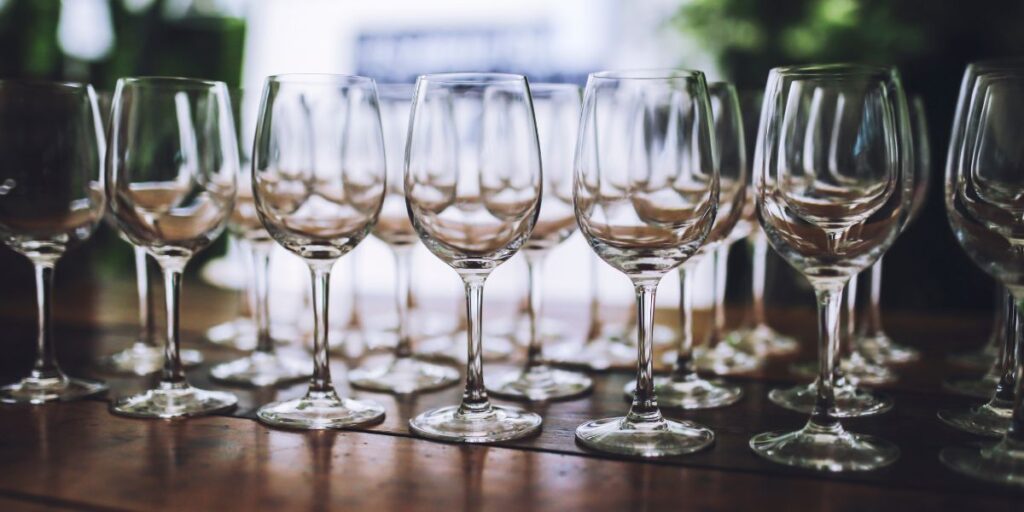There’s something about really clean glassware. When it’s spot free, smudge free, and dust free, it seems to make anything in it look and taste better. On the other hand, when it’s not clean, it can ruin an otherwise perfectly-set table.
You know what I mean. Who hasn’t dined out and been greeted with a cloudy, spotted water glass or – horrors – the dreaded wine glass with the previous customer’s lipstick on it? Yuck. If you get glassware looking like that, you have to wonder what’s going on with your food…but that’s another story.
As someone who owns a ridiculous number of glasses, I’m kind of obsessed with keeping them clean. The good news is that achieving super sparkly glassware isn’t hard at all. Even better, you probably already have everything needed to make your glasses looking like new. Read on for the simple details.
For more tips, read “The Best Cleaners for Glass, Wood, Stone, and Tile.”
Wash them by hand.
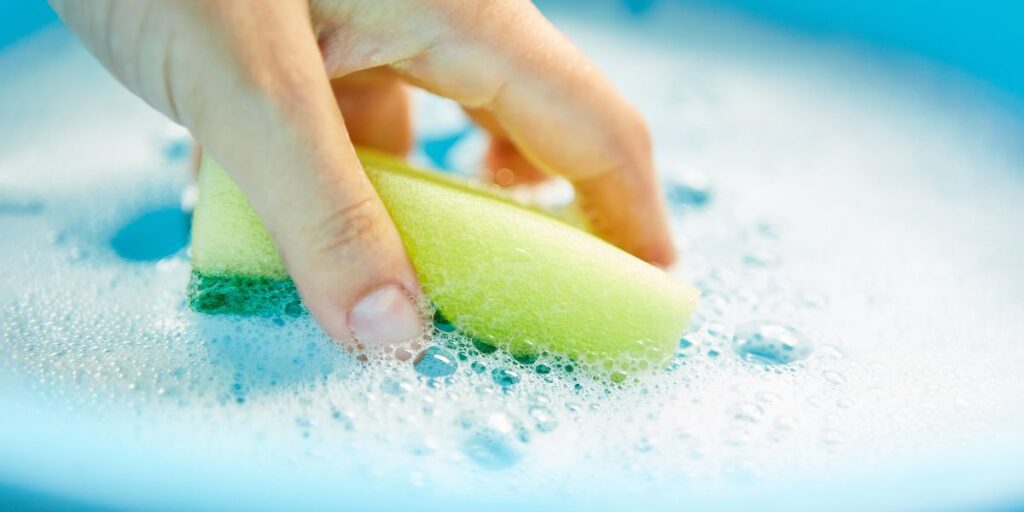
If you want flawless glassware, skip the dishwasher. Over time, washing glasses in the dishwasher can lead to mineral buildup and etching, which makes them look cloudy. Hard water minerals like calcium build up on the surface of your glasses over time, resulting in a hazy appearance. It’s likely combined with etching that also occurs. Etching is the result of detergents and high water temperatures wearing away the surface of the glass, leaving tiny scratches.
To avoid these issues, hand wash your glasses in warm water with a mild detergent, like Dawn. I like to add a little distilled white vinegar for extra cleaning power.
Dry with a lint-free cloth.
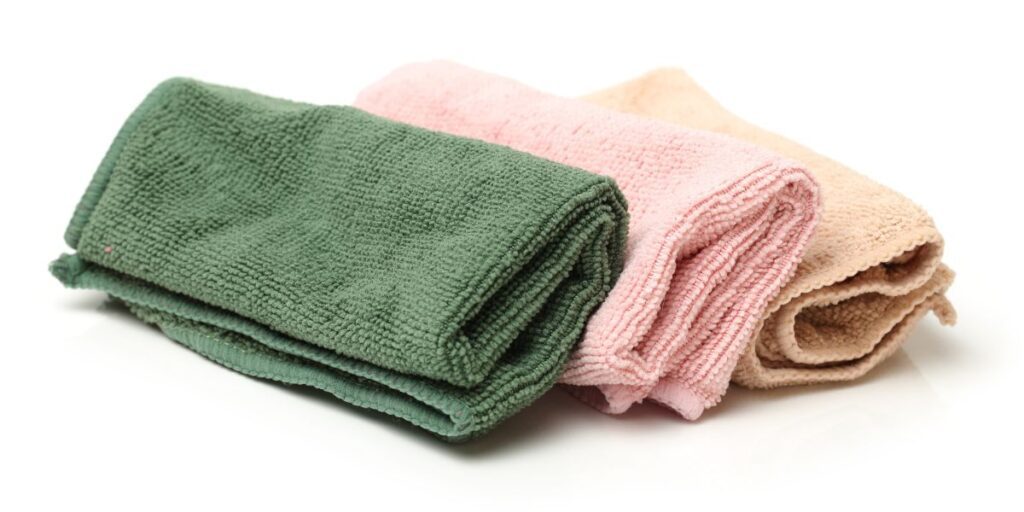
Using a cotton kitchen towel or microfiber cloth, gently dry your glasses starting from the inside and moving to the outside. Hold the glass up to the light as you’re drying it to ensure you haven’t missed any water drops, which can leave spots. As you’re finishing, give your glass a light buffing with a dry part of the cloth to remove any fingerprints.
The key in this step is to use a lint-free cloth. Anything else will leave dusty little fibers. Also, ensure your drying cloth is clean. Glass shows everything, including what may be on a not-so-clean drying cloth.
As an Amazon Affiliate, I earn from qualifying purchases.
Banish the haze.
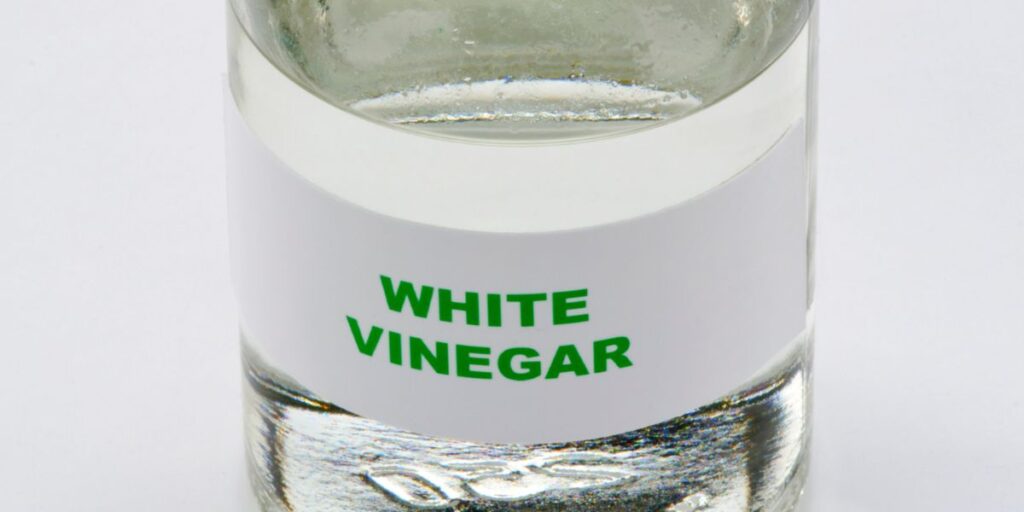
If your glassware has already fallen victim to mineral buildup, fear not, that annoying haze is pretty easy to remove. Simply soak the glasses in distilled white vinegar for 15-20 minutes, ensuring the entire glass is submerged. If you can’t submerge it all the way, just turn it over during the process (15 minutes on one side and 15 on the other) so both sides get a good soaking. The acidity in the vinegar will break down the mineral deposits.
When done, rinse the glasses in warm water, then wash in mild, soapy water. Avoid using any scratchy cleaning pads, as those will only scratch your glasses. Rinse again and dry with a clean, lint-free cloth.
Deal with the scratches.
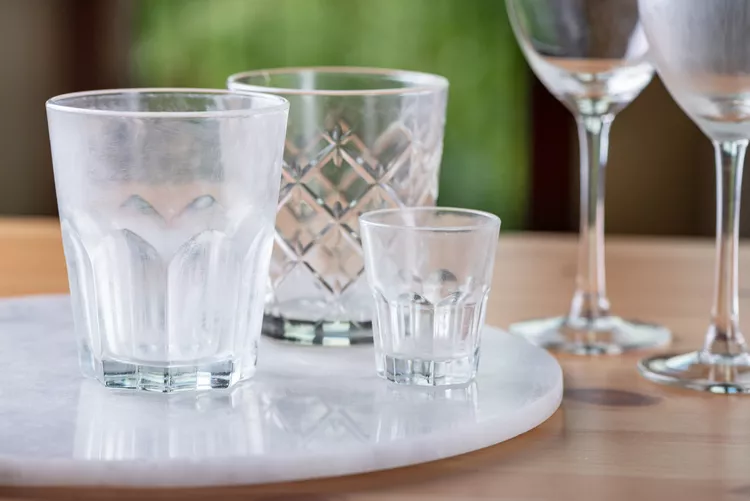
You may find that the cloudiness affecting your glassware is from etching. If this is the case, the best thing to do is avoid further damage by following the tips above. If you’re intent on removing the scratches, you can try a polishing compound designed specifically for glass.
Polishing compounds with cerium oxide are used to buff the scratches out of glass surfaces, typically windows, windshields, and the like. It’s possible to use such a compound on your glassware, but keep in mind that you’ll be drinking out of your glasses, so keep any scratch-removal attempts to the outside of the glass. You don’t want residue from the compound mixing with your merlot.
Also note that application of polishing compounds typically requires a motorized buffing wheel, so it can get a bit involved. Preventing further damage or just replacing the etched glasses may be a better option.
Looking for an overall house cleaning? Get our top three tips.
